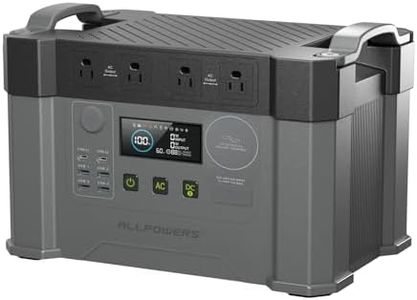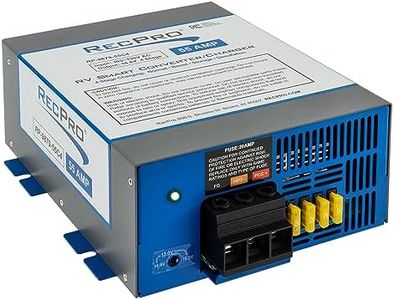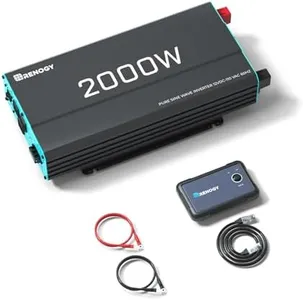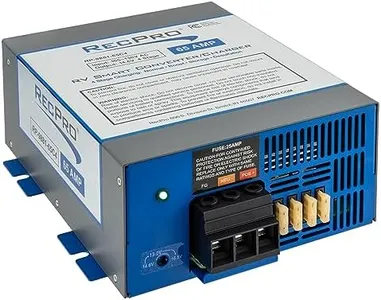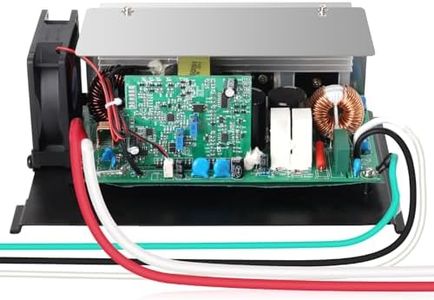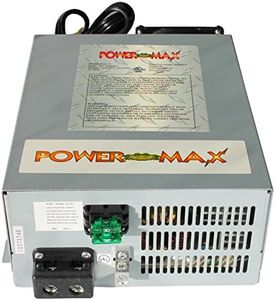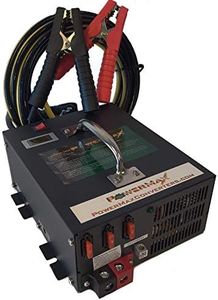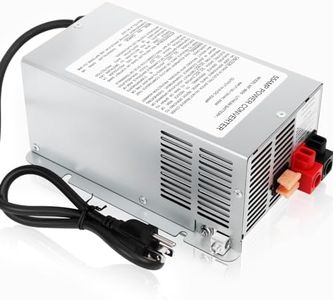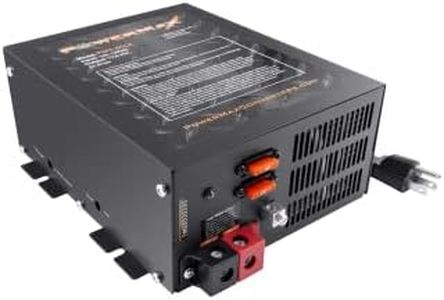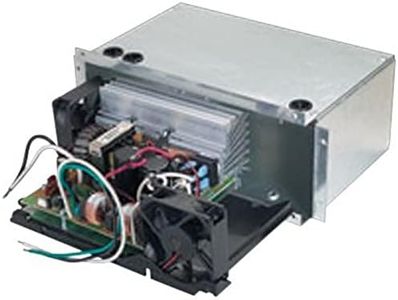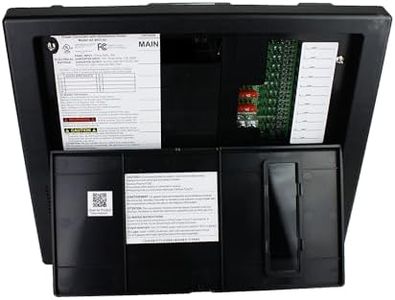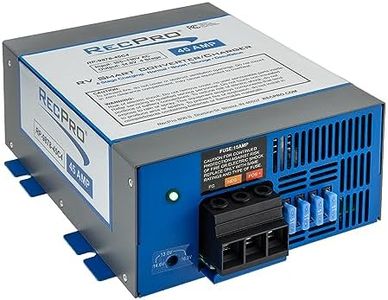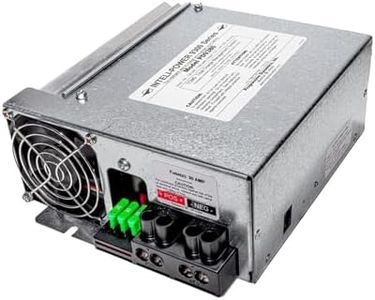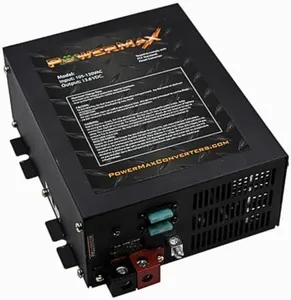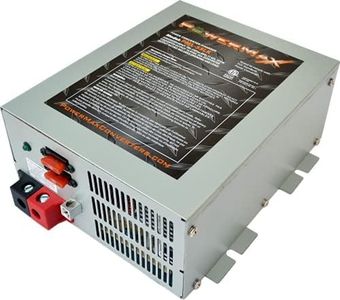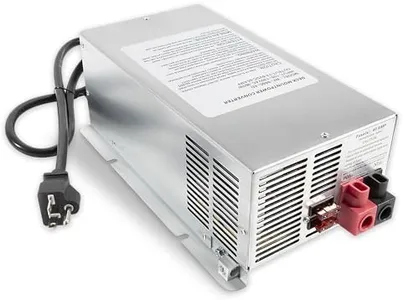10 Best Rv Power Converters 2025 in the United States
Our technology thoroughly searches through the online shopping world, reviewing hundreds of sites. We then process and analyze this information, updating in real-time to bring you the latest top-rated products. This way, you always get the best and most current options available.

Our Top Picks
Winner
RecPro RV Converter 55 Amp | RV Power Converter & Battery Charger | 4 Stage Smart Charging | 120VAC to 12VDC | 13V to 16.5V Operating Range
Most important from
1051 reviews
The RecPro RV Converter 55 Amp is a versatile and efficient power converter designed for RV use. It converts 120VAC shore power into 12VDC power, which is essential for powering low voltage lights and appliances in your RV. One of its notable strengths is the 4 Stage Smart Charging feature, which ensures your RV's battery is charged optimally and safely, whether you're using lead or lithium batteries. With an operating range of 13V to 16.5V, it provides flexibility and reliability in different power conditions.
Available in various capacities, including 35-amp, 45-amp, 55-amp, 60-amp, 75-amp, and 100-amp, you can choose the one that best suits your needs. The 55-amp version weighs 2.85 kilograms and has a compact design with dimensions of 9.5 x 8 x 3 inches, making it easy to fit into your RV's limited space. The built-in charging indicator is a handy feature, allowing you to monitor the charging status easily. The RecPro RV Converter 55 Amp is well-suited for RV owners looking for a reliable and efficient power converter that can handle various battery types and provide consistent power for their vehicle's electrical needs.
Most important from
1051 reviews
Renogy 2000W Pure Sine Wave Inverter 12V DC to 120V AC Converter for Home, RV, Truck, Off-Grid Solar Power Inverter 12V to 110V with Built-in 5V/2.1A USB / Hardwire Port, Remote Controller
Most important from
4113 reviews
The Renogy 2000W Pure Sine Wave Inverter is designed to meet the needs of RV enthusiasts and off-grid users by converting 12V DC power to 120V AC power. With a continuous output of 2000W and a peak surge capability of 4000W, it can handle various appliances comfortably, making it an excellent choice for powering everything from lights to electronics. Its pure sine wave technology ensures that your sensitive devices are protected, providing a stable and clean power supply similar to what you would find in a typical household outlet.
One of the standout features is its robust safety system, which includes protections against under-voltage, over-voltage, and over-temperature conditions. The built-in cooling fans help maintain optimal operating temperatures, which enhances reliability and longevity. Additionally, the inverter comes with multiple AC outlets, a USB port, and a wired remote control, offering convenient and user-friendly operation.
While the inverter is relatively lightweight at 11.7 pounds and compact in size, some users may find the requirement for a deep cycle battery with at least 80% discharge depth limiting, especially if they plan to use it in more casual or variable power situations. Its ETL certification is a plus, ensuring safety and quality assurance. It’s advisable to be mindful of its operating limitations and to ensure compatibility with the devices you plan to power.
Most important from
4113 reviews
RecPro RV Converter 65 Amp | RV Power Converter & Battery Charger | 4 Stage Smart Charging | 120VAC to 12VDC | 13V to 16.5V Operating Range
Most important from
1051 reviews
The RecPro RV Converter 65 Amp is a solid choice for RV owners looking to convert 120VAC shore power into usable 12VDC power. It stands out with its capability to charge your RV's battery while simultaneously powering low voltage lights and appliances, making it quite versatile for various needs. One of its key strengths is the 4-stage smart charging, which ensures efficient battery management and prolongs battery life, whether you're using lead or lithium batteries.
In terms of power output, 65 amps is more than sufficient for most RV setups, and it's available in multiple capacities to suit different requirements. The size and weight are also reasonable for a wall-mounted unit, weighing in at just under 7 pounds and measuring about 12.71 x 8.9 x 4.41 inches, making it manageable for installation.
While the converter performs well under normal conditions, some may find the cooling system less effective during prolonged high power usage, which could lead to reduced efficiency over time. Additionally, the product comes with an LED indicator, which is useful, but more detailed information on battery status would have been a nice addition for those who prefer more control.
Most important from
1051 reviews
Buying Guide for the Best Rv Power Converters
Choosing the right RV power converter is crucial for ensuring that your recreational vehicle's electrical system runs smoothly and efficiently. A power converter transforms the 120-volt AC power from an external source or generator into 12-volt DC power, which is used by most of the RV's appliances and systems. Understanding the key specifications and how they relate to your needs will help you make an informed decision.FAQ
Most Popular Categories Right Now
